Fahmy RM1,2*, Alolayan L1
1Department of Optometry and Vision Sciences, College of Applied Medical Sciences, King Saud University, Riyadh, KSA
2Ophthalmology Department, College of Medicine, Cairo University, Egypt
*Correspondence author: Rania Medhat Fahmy, Associate Professor, Department of Optometry and Vision Sciences, College of Applied Medical Sciences, King Saud University; KSA and Department of Ophthalmology, College of Medicine, Cairo University, Giza, Egypt; Email: [email protected]
Published Date: 30-05-2024
Copyright© 2024 by Fahmy RM, et al. All rights reserved. This is an open access article distributed under the terms of the Creative Commons Attribution License, which permits unrestricted use, distribution, and reproduction in any medium, provided the original author and source are credited.
Abstract
The COVID-19 pandemic is broadly streaked by face masks utilization. Face mask application has been believed as a potent reason of dry eye. We pursued to esteem the effectiveness of masks application on the visual quality of patients. Online questionnaire was carried to detect alterations happened with soft contact lenses usage during the pandemic relative to face masks employment. A total of 515 subjects participated in the study. Statistical analysis was performed with Microsoft Excel version 28 and proved that the use of contact lenses increased compared with before the pandemic (p ≥0.05). Subsequently, it was concluded that dry eye sensation was worse in monthly, weekly and daily contact lens wearers where p value was 0.037, 0.032 and 0.007 consecutively. Hence contact lens wearers, using a mask suffered from dry eye symptoms and reduced vision quality.
Keywords: COVID-19; Pandemic; Face Mask; Contact Lens; Dry Eye
Introduction
Contact lenses and the ocular environment are less compatible, according to the Tear Film and Ocular Surface (TFOS) International Workshop on Contact Lens Discomfort (CLD) [1]. CLD can be caused by a variety of factors, including the contact lens itself or the surroundings. The material, design and upkeep of contact lenses are all factors to consider. Patient-specific variables, compliance and ocular surface conditions are examples of environmental causes. According to a prior study, 26.3 percent of current contact lens wearers were unsatisfied with their lenses and 24 percent of 453 respondents with a history of contact lens usage discontinued contact lens wear permanently. The most prevalent complaint across both groups of participants was dry eyes [2].
During the COVID-19 Pandemic, the use of Face mask has increased. Face masks are worn to prevent infection and decrease disease transmission. All face mask wearers will have dry eye symptoms; however, Sjögren’s syndrome and contact lens wearers are at greater risk [3]. Dry eyes can induce greater touching of the eyes, which can lead to viral transmission when unclean hands are placed close to the face. Coronavirus infection is more likely as a result of this [4]. Most individuals described an awareness of air blowing upward from the mask into their eyes. Exhaled air is directed up and across the ocular surface, coming out of the top of the face mask. Increased airflow is likely to increase the evaporation of the tear film, producing ocular surface irritation or inflammation. Dry eyes can cause a gritty, sandy, irritated, itchy or watery feeling in the eyes, as well as redness [5]. The severity of the symptoms is related to the thickness of the tear lipid layer [6]. The tear film is an important barrier against pathogen invasion and it may be compromised if wearing a face mask as it causes this barrier to evaporate more quickly [7]. Dry eyes can induce greater rubbing or touching of the eyes, which can lead to increased viral transmission when unclean hands are placed close to the face [8]. The effects of masks on contact lens wearers is not yet well described in literature. Hence, the goal of this study is to look at the effects of wearing a face mask on contact lens wearers as well as their subjective symptoms.
Materials and Methods
Data Collection
Online questionnaire was conducted to find out what alterations happened with soft contact lenses application during the pandemic relative to the use of masks. The questionnaire be composed of nine questions in Arabic and English version that are based on the usage of soft contact lenses and the extent of ocular comfort following use of face masks. We devised a list of possible questions to obtain the following information: demographic data (sex, age, profession, etc.); contact lens type, replacement and compliance with contact lens care before and after the pandemic; contact lens wear frequency before the pandemic and how it has varied during and after the pandemic; mask use frequency; ocular symptoms associated with the use of Contact Lenses (CL) and the influence of ocular symptoms on the use of contact lenses. Participants were asked to recall if they were teleworking and did not use the mask during work or if there was social distance and the usage of a mask in their profession to ensure uniformity in the responses about mask use frequency. We were able to confirm that contact lens usage frequency and hours had no effect on the answers in this way. Moreover, the total numbers of hours of contact lenses wear were considered, as if a person did not constantly use the mask, contact lenses could still impact ocular dryness symptoms.
Subjects
The questionnaire was distributed online using internal platforms of several universities and optical centers from December 2021 till March 2022 in Riyadh area, Saudi Arabia.
Inclusion -Age 15-40 years old – Soft contact lens wearers
Exclusion-Subjects with chronic ocular diseases -Prior ocular surgery
Questionnaire
The questions concerning dry eye symptoms with contact lenses were derived from several questionnaires (OSDI, DEQS, UNC DEMS, NEI VFQ 25, SPEED, DEQ-5, DEEP and CLDEQ-8). The “Contact Lens Dry Eye Questionnaire-8 (CLDEQ-8)” received special concern as it is the only validated questionnaire on contact lens user eye complaints. The following questions were included in the final questionnaire [9]
- Frequency of use and hours of wear of contact lenses (CL) before the pandemic (classified as “Daily”, “2-3 days/week” and “Sporadically”)
- Current frequency of use and hours of use of CL (classified as “Daily”, “2-3 days/week” and “Sporadically”)
If the time of use has varied, explain the reasons
- Frequency of cleaning routine before and after the pandemic (rated as “Improves”, “Worsens” and “Stays the same”)
- Symptoms of eye discomfort with the use of contact lenses (rated as “Never”, “Some- times” and “Often”) and with the mask (rated as “Improves”, “Worsens” and “Stays the same”)
- Foreign body sensation, dryness, irritation, itching or burning with the use of contact lenses (rated as “Never”, “Sometimes” and “Often”) and with the mask (rated as “Improves”, “Worsens” and “Stays the same”).
- Eye dryness with the use of contact lenses (rated as “Never”, “Sometimes” and “Often”) and with the mask (rated as “Improves”, “Worsens” and “Stays the same”)
- Sensation of blurriness with the use of contact lenses (rated as “Never”, “Some- times” and “Often”) and with the mask (rated as “Improves”, “Worsens” and “Stays the same”).
- Need to close the eyes due to ocular discomfort with the use of contact lenses (rated as “Never”, “Sometimes” and “Often”) and with the mask (rated as “Improves”, “Worsens” and “Stays the same”)
- Need to remove contact lenses due to eye discomfort (rated as “Never”, “Sometimes” and “Often”) and with the mask (rated as “Better”, “Worse” and “Stays the same”
Statistical Analysis
The statistical analysis was carried out using the Microsoft Excel (Version 28.0). The normal distribution of the variables was conducted with the Kolmogorov-Smirnov test. As a result of a non-parametric distribution, the Wilcoxon non-parametric test was used. To verify the association between the categorical variables, the chi-squared test, as appropriate, was used. To evaluate the statistical significance, a cut-off point of p < 0.05 was considered.
Results
Descriptive Analysis
A total of 515 subjects participated in the study, with a mean age of 21. 39 years (Fig. 1). Regarding sex, 4% were men and 96% women (Fig. 2). Concerning CL replacement, 18.3% of the subjects used annually replacement CL, 42.5% monthly replacement, 13.8% weekly replacement and 25.4% daily replacement.
Most of participants (51.5%) had SE between -0.50D and +0.50D, (40.6%) were myopic (SE ≤ −0.5) and (8%) were hyperopic (SE ≥ +0.50D) (Fig. 3).
CL Usage Frequency
The numbers of hours of CL wear increased insignificantly compared with before the pandemic (p ≥ 0.05) (Fig. 4). Concerning the cleaning routine, that is, taking care of and disinfecting the lenses, was improved in 49.3%, remained the same in 41.6% of cases and worsened in 9.1%.
Eye Symptoms
Among the participants, 55.8% sometimes presented some symptoms associated with dry eye before the pandemic (Fig. 5). These symptoms remained constant in 54.5% of participants after using the mask, worsened in 23.2% and improved in 22% (Fig. 6). In turn, it was found that the sensation of dry eyes was worse in monthly, weekly and daily contact lens wearers where p-value was 0.037, 0.032 and 0.007 respectively. No association was found between the presence of ocular symptoms and the refractive state (p> 0.05).
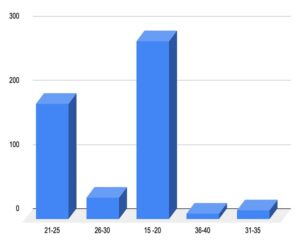
Figure 1: Age distribution among participants.
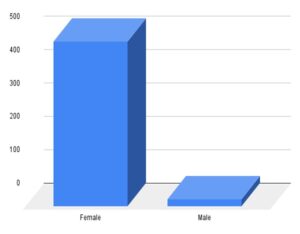
Figure 2: Gender distribution among participants.

Figure 3: Spherical equivalent as function of ametropia.
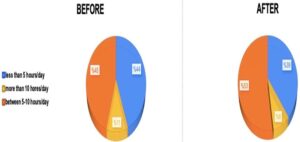
Figure 4: Hours of contact lens wear before and after the pandemic.
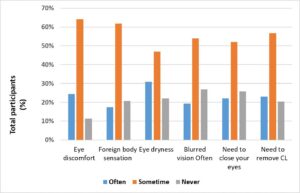
Figure 5: Presence of ocular symptoms in contact lens wearers before the pandemic.
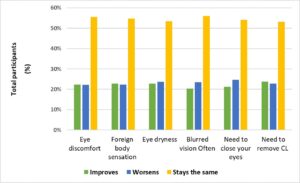
Figure 6: Presence of ocular symptoms in contact lens wearers after the use of face masks.
Discussion
The concentration of this study was to explore the ocular symptoms of dry eye in soft contact lens wearers following use of face mask as a COVID-19 preventive measure. To our knowledge, this is the first study in the Kingdom of Saudi Arabia, Riyadh, to study the effects of using face masks. The Tear Film and Ocular Surface Society (TFOS) had already observed that discomfort and the presence of discomfort when wearing contact lenses were linked to a decrease in contact lens compatibility with the ocular environment [1] before the pandemic. Discomfort can be caused by a variety of factors, including the contact lens itself (material, design and care) or the environmental elements (compliance and ocular surface conditions).
Although a higher rate of ocular irritation has been documented in similar cases, there is still little literature available about the mask’s ocular adverse effects and none in contact lens wearers. For example, due to air leakage or regurgitation through the nasolacrimal system, continuous positive airway pressure machines might irritate the ocular surface [10,11]. The exit of exhaled air, which has a temperature of around 36-37°C and flows through the upper edge of the mask onto the ocular surface, is thus the most important factor. This heated air current produces dry eye symptoms by increasing instability, evaporation, hyperosmolarity and tear film renewal. The thickness of the tear lipid layer, in turn, is proportional to the severity of the symptoms [12]. Exhaled air has a lower oxygen content and a higher carbon dioxide content, which causes a drop in tear pH and ocular surface degradation, as well as a drop in stromal pH, resulting in corneal discomfort [13-16].
The frequency of contact lens use increased in this study when compared to before the epidemic. Although the main reason for this is that most Saudis have been inoculated against the COVID-19 virus, either naturally (already infected) or through finished vaccine doses and they have resumed normal daily activities after two years of social limitations. This contradicts research by Sun, et al., and Olivia, et al., which revealed that the tear film is an important barrier against infections, but because the barrier dissipates too quickly due to mask wear, it can be reduced [17,18]. Dry eye symptoms also encourage people to rub their eyes and face more, spreading the infection. All these variables contribute to an elevated fear of eye infections as a result of prolonged mask use. This risk is of particular concern during the COVID-19 pandemic because the virus has previously been shown to spread through eye contact [19]. Furthermore, it has been established that after three years of wearing CL, between 10% and 50% of users discontinue them. 70 % of the general population has eye irritation at the end of the day; the sensation of dry eye is the most common. This symptom is reported by around 40% of soft lens wearers, with 25% reporting moderate to severe symptoms, limiting their wear time [20-23].
In this meaning, in our research, Dry eye symptoms were detected in 55.8% of the subjects, with ocular discomfort accounting for 65.4 %. As a result, majority of the individuals’ symptoms remained stable. According to Boccardo, et al., nearly one-third of the participants (32.1%) never had dry eye symptoms, 54.3 % had them occasionally and 13.6 % had them frequently [24]. Only 0.8 % claimed that wearing a mask relieved their symptoms, 72.3% no change and 26.9% said their symptoms worsened. In other words, 18.3% of the patients reported dry eye because of the mask, which is similar to our findings (23.7%). However, it should be noted that, unlike our results, they did not find significant differences in dry eye symptoms in users who wore glasses as compared to CL users. This disparity could be explained by the fact that this study was conducted in September and October 2020, whereas our data was obtained in December 2021, during the period when quarantine was limited and people returned back to work and school, where mask use was remarkable. At the same time, it should be remembered that Boccardo, et al., study was conducted in Italy, while ours was conducted in Saudi Arabia and mask use regulation was different in each country. Giannaccare, et al., conducted another trial in which the average daily mask use was 6 hours per day and ocular symptoms worsened in 10.3% of the participants. Similarly, 19.6% of the individuals conveyed their need to artificial tear [25].
Furthermore, we must remember that dry eye, along with a foreign body sensation, redness, weeping, itching, eye pain and discharge, were the most common ocular symptoms and signs in COVID-19 patients. Nasiri, et al., revealed in a systemic study that the mechanism of dry eye or foreign body feeling in COVID-19 patients is unknown and may not be linked to SARS-CoV-2 [26]. Dry eye can be linked to the usage of face masks during the COVID-19 outbreak, especially when the masks are loose against the face and nose and the airflow is directed more towards the eyes. As a result of the limited access to lubricating substances due to fear of contamination from hands and drug containers, the symptoms of dry eye worsen [17]. For this purpose, simultaneously with encouraging widespread use of masks, ophthalmologists and optometrists should be perceptible of this new variety of dry eye and instruct patients on methods of proper mask fitting so that exhaled air does not pass directly into the eyes. Therefore, vision professionals should be sure that face mask fits adequately, especially in contact lenses wearers. Adhesive tape can be stratified to the face mask upper edge carefully without interference with blinking.
Artificial tears application to lubricate ocular surfaces (as recommended) can assist to relieve symptoms. Ultimately, to avoid visual fatigue using digital devices, it is recommended that people control their air conditioning use and time interval breaks for its application [27]. Future research is recommended combining both questionnaires and clinical ocular examination for better evaluation of ocular dryness associated with face masks application.
Conclusion
Our results reveal that face masks use augments ocular dryness symptoms in contact lens wearers. Therefore, the dryness clinical manifestations are increased by wearing a mask for long periods of time. So, we can anticipate that the prevalence of Dry eye disease may increase significantly in the coming years if we continue using masks as preventive measure for respiratory infections.
Conflicts of Interest
The authors declare no conflict of interest. The funders had no role in the design of the study; in the collection, analyses or interpretation of data in the writing of the manuscript or in the decision to publish the results.
Informed Consent Statement
Informed consent was obtained from all subjects involved before start of answering the questionnaire.
Data Availability Statement
Data are contained within the article.
References
- Nichols JJ, Willcox MD, Bron AJ. The TFOS International Workshop on Contact Lens Discomfort: executive summary. Invest Ophthalmol Vis Sci. 2013;54:TFOS7-13.
- Pritchard N, Fonn D, Brazeau D. Discontinuation of contact lens wear: a survey. Int Contact Lens Clin. 1999;26:157-62.
- Oldfield E, Malwal SR. COVID-19 and other pandemics: how might they be prevented? ACS Infect Dis. 2020;6(7):1563-6.
- Lazzarino AI, Steptoe A, Hamer M, Michie S. COVID-19: important potential side effects of wearing face masks that we should bear in mind. BMJ. 2020;369:m2003.
- Moshirfar M, West WB Jr, Marx DP. Face mask-associated ocular irritation and dryness. Ophthalmol Ther. 2020;9(3):397-400.
- Matusiak Ł, Szepietowska M, Krajewski P, Białynicki-Birula R, Szepietowski JC. Inconveniences due to the use of face masks during the COVID-19 pandemic: A survey study of 876 young people. Dermatol Ther. 2020;33:e13567.
- Sun CB, Wang YY, Liu GH, Liu Z. Role of the eye in transmitting human coronavirus: what we know and what we do not know. Front Public Health. 2020;8:155.
- Lazzarino AI, Steptoe A, Hamer M, Michie S. COVID-19: important potential side effects of wearing face masks that we should bear in mind. BMJ. 2020;369:m2003.
- Martinez-Perez C, Monteiro B, Soares M, Portugues F, Matos S, Ferreira A, et al. Influence of face masks on the use of contact lenses. Int J Environ Res Public Health. 2021;18:7407.
- Salinas R, Puig M, Fry CL, Johnson DA, Kheirkhah A. Floppy eyelid syndrome: a comprehensive review. Ocul Surf. 2020;18(1):31-9.
- Singh NP, Walker RJ, Cowan F, Davidson AC, Roberts DN. Retrograde air escape via the nasolacrimal system: A previously unrecognized complication of continuous positive airway pressure in the management of obstructive sleep apnea. Ann Otol Rhinol Laryngol. 2014;123:321-4.
- Matusiak L, Szepietowska M, Krajewski P, BialynickiBirula R, Szepietowski JC. Inconveniences due to the use of face masks during the COVID-19 pandemic: a survey study of 876 young people. Dermatol Ther. 2020.
- Alves M, Novaes P, Morraye MD, Reinach PS, Rocha EM. Is dry eye an environmental disease? Arq Bras Oftalmol. 2014;77:193-200..
- Wolkoff P, Skov P, Franck C, Petersen LN. Eye irritation and environmental factors in the office environment hypotheses, causes and a physiological model. Scand. J Work Environ Health. 2003;29:411-30.
- Nakamura S, Shibuya M, Nakashima H, Hisamura R, Masuda N, Imagawa T, et al. Involvement of oxidative stress on corneal epithelial alterations in a blink-suppressed dry eye. Invest Ophthalmol. Vis. Sci. 2007;48:1552-8.
- Chen X, Gallar J, Pozo MA, Baeza M, Belmonte C. CO2 stimulation of the cornea: A comparison between human sensation and nerve activity in polymodal nociceptive afferents of the cat. Eur J Neurosci. 1995;7:1154-63.
- Sun CB, Wang YY, Liu GH, Liu Z. Role of the eye in transmitting human coronavirus: what we know and what we do not know. Front Public Health. 2020;8:155.
- Li JO, Lam DSC, Chen Y, Ting DSW. Novel Coronavirus disease 2019 (COVID-19): The importance of recognizing possible early ocular manifestation and using protective eyewear. Br J Ophthalmol. 2020;104;297-8.
- Wu P, Duan F, Luo C, Liu Q, Qu X, Liang L, et al. Characteristics of ocular findings of patients with coronavirus disease 2019 (COVID-19) in Hubei Province, China. JAMA Ophthalmol. 2020;138(5):575-8.
- Pritchard N, Fonn D, Brazeau D. Discontinuation of contact lens wear: a survey. Int Contact Lens Clin. 1999;26(6):157-62.
- Begley CG, Chalmers RL, Mitchell GL, Nichols KK, Caffery B, Simpson T, et al. Characterization of ocular surface symptoms from optometric practices in North America. Cornea. 2001;20(6):610-8.
- Riley C, Young G, Chalmers R. Prevalence of ocular surface symptoms, signs, and uncomfortable hours of wear in contact lens wearers: the effect of refitting with daily-wear silicone hydrogel lenses (senofilcon a). Eye Contact Lens. 2006;32(6):281-6.
- Kaštelan S, Lukenda A, Salopek-Rabatić J, Pavan J, Gotovac M. Dry eye symptoms and signs in long-term contact lens wearers. Collegium Antropologicum. 2013;37(1):199-203.
- Boccardo L. Self-reported symptoms of mask-associated dry eye: A survey study of 3,605 people. Cont Lens Anterior Eye. 2021;101408.
- Giannaccare G, Vaccaro S, Mancini A, Scorcia V. Dry eye in the COVID-19 era: how the measures for controlling pandemic might harm ocular surface. Graefe’s Arch Clin Exper Ophthalmol. 2020;258:2567-8.
- Asiri N, Sharifi H, Bazrafshan A, Noori A, Karamouzian M, Sharifi A. Ocular manifestations of COVID-19: a systematic review and meta-analysis. J Ophthalmic Vis Res. 2021;16:103-12.
- Koh S, Rhee MK. COVID-19 and dry eye. Eye Contact Lens. 2021;47(6):317-22.
Article Type
Research Article
Publication History
Received Date: 04-05-2024
Accepted Date: 22-05-2024
Published Date: 30-05-2024
Copyright© 2024 by Fahmy RM, et al. All rights reserved. This is an open access article distributed under the terms of the Creative Commons Attribution License, which permits unrestricted use, distribution, and reproduction in any medium, provided the original author and source are credited.
Citation: Fahmy RM, et al. Influence of Face Mask on the Use of Soft Contact Lenses in Saudi Arabia. J Ophthalmol Adv Res. 2024;5(2):1-8.

Figure 1: Age distribution among participants.

Figure 2: Gender distribution among participants.

Figure 3: Spherical equivalent as function of ametropia.

Figure 4: Hours of contact lens wear before and after the pandemic.

Figure 5: Presence of ocular symptoms in contact lens wearers before the pandemic.

Figure 6: Presence of ocular symptoms in contact lens wearers after the use of face masks.


